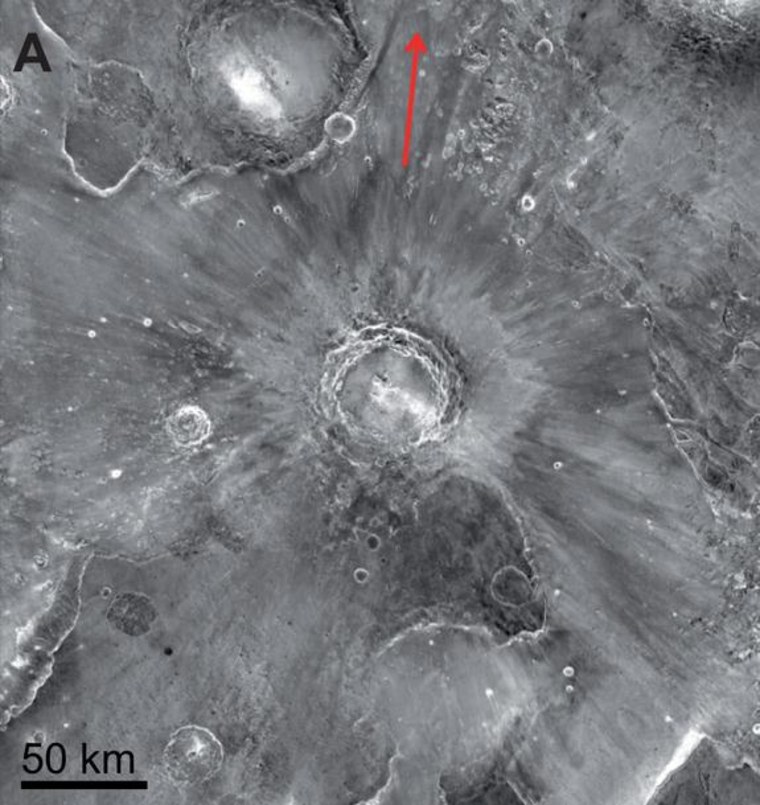A huge meteorite impact on Mars 5 million years ago blasted toward Earth many of the rocks that scientists scrutinize to learn more about the Red Planet, a new study reveals.
The cosmic crash left a 34-mile-wide (55 kilometers) gouge on Mars called Mojave Crater and is the source of all "shergottite" or igneous rock Martian meteorites found on Earth, researchers say. Examining the crater and the meteorites also led to new revelations about how old the rocks are.

"We tried to find good arguments to convince ourselves that [Mojave Crater] was 5 million years or younger. You don’t expect this size of crater so recently formed, statistically at least," lead author Stephanie Werner, a planetary scientist at the University of Oslo in Norway, told Space.com. [Mars Meteorites: Red Planet Pieces on Earth (Photos)]
Werner's team first used a technique called crater counting, which estimates a region's age by seeing how many large and small craters are in a particular zone. The more large craters, the older the terrain likely is.

Through their detective work, Werner said, they found the crater is indeed about 5 million years old. The material blasted from Mojave Crater had fewer meteorite strikes than the surrounding channel floor.
The new study was published Thursday (March 6) in the journal Science.
— Elizabeth Howell, Space.com
This is a condensed version of a report from Space.com. Read the full story.
Follow Elizabeth Howell @howellspace, or Space.com @Spacedotcom. We're also on Facebook and Google+.